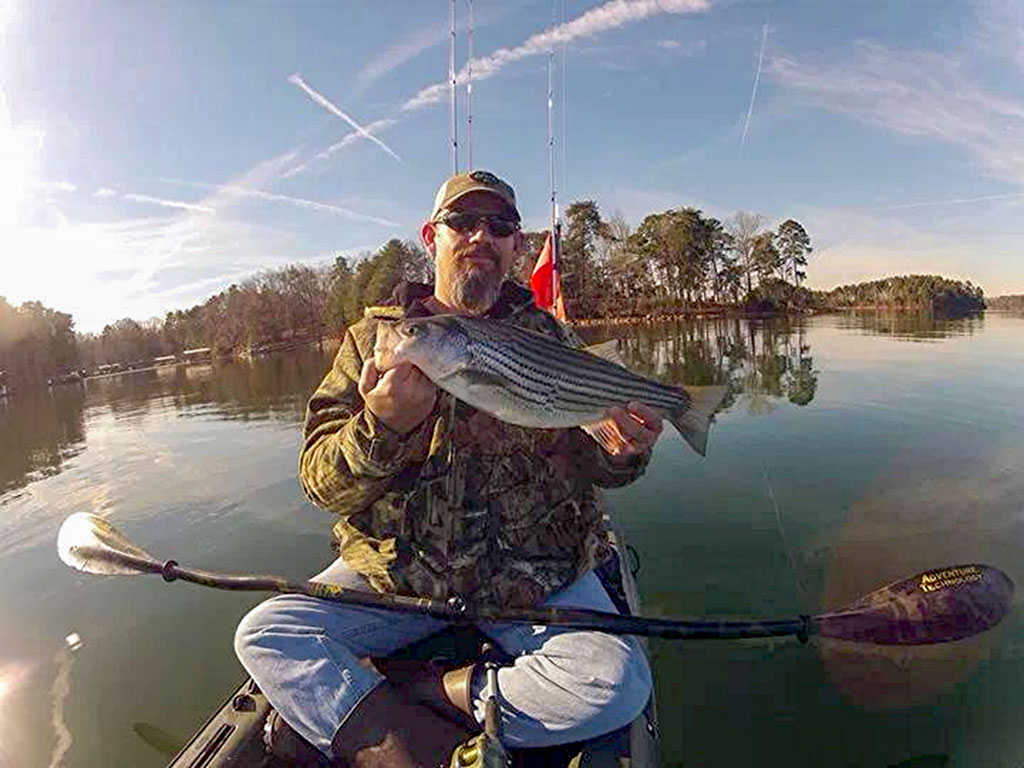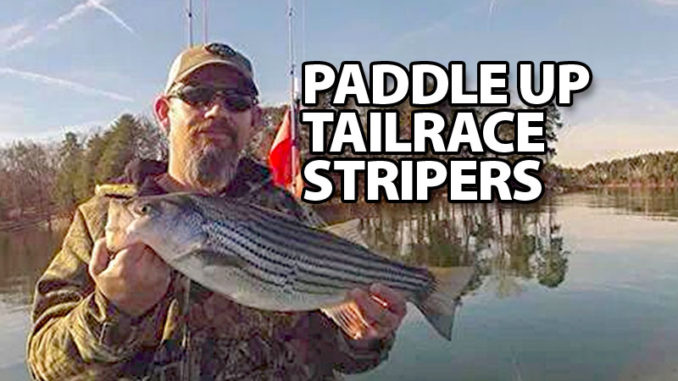
Not all reservoir stripers spend the summer in deep water; some never leave the area below upstream dams where their spring spawning runs ended. And kayaks and canoes are great ways to get to them.
Long before striped bass were introduced into reservoirs, they lived in rivers. Coincidentally, long before the invention of modern fishing boats, Native American anglers pursued river stripers from small, sleek, self-propelled watercraft. Today, a select few anglers earn their stripes that old-fashioned way.
Stuart Venable is one of them. He’s a member of a group of fishermen who call themselves “River Stalkers” because they concentrate on catching stripers in rivers across the Southeast.
A native of Charlotte, N.C., Venable grew up as the son of a competitive bass angler but he decided to focus on a slightly different fishery: striped bass in the trailraces below dams on the Catawba and Yadkin river systems.
“I really like to fish tailraces, primarily fishing the Yadkin and Catawba, because of all the fish that come up out of the lakes,” Venable said. “We try to focus on the areas on the upper end or the lower end of the main-lake bodies. I concentrate mostly on the Catawba River in relation to Lake Norman, the upper end and the lower end of Mountain Island (Lake), and below Lake Wylie in South Carolina.”
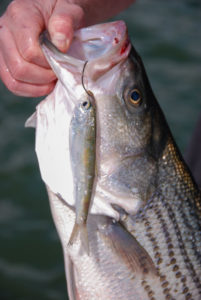
Other tailraces within reach of paddling anglers are the tailrace below Oxford Dam (Lake Hickory) and below Lookout Shoals Dam, and below High Rock, Tuckertown, Falls and Tillery dams on the Yadkin/Pee Dee system.
After the spring spawning run, a percentage of striped bass will remain in the tailraces and headwaters of reservoirs. The combination of cool water, food and shelter provides all they need to survive the summer.
Venable and two of his “River Stalker” buddies from north Georgia, Evan Howard and Eric Hughes, concentrate on paddling their way to tailrace stripers and have developed approaches that will consistently catch them in waters where a lot of fishermen can’t — or won’t — go.
“The pattern is the same in just about any other river you name in Alabama, Georgia, Tennessee, South Carolina and North Carolina,” Howard said. “Stripers migrate as far they can for their spawning run out of the lakes. After spawning, they kind of spread out. Some run up tributary arms and smaller rivers, and some will run straight up to the nearest dam and stop there.
“On the Catawba, most of them are going to be running straight up into the dam. You find a lot of them will stay there after the spawn; they will disperse and kind of spread out, seeking cooler water.”
Hughes, who owns Georgia Kayak Adventures, said, “People are starting to really get interested in chasing striped bass on the rivers, and that’s kind of what we all do.”
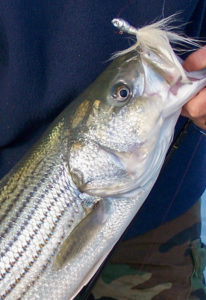
Where river stripers live
In order to catch striped bass in a river run, anglers need to be able to read water and determine what areas striped bass will find the most attractive for just hanging out or stalking prey. Howard compares it to trout fishing.
“They’re not like bass where they sit anywhere there is good cover; they usually have to have cooler water and a little bit deeper water if there is much sunlight,” he said. “They’ll either go way up creeks looking for slightly deeper water, especially big fish; they love to stack up in the creeks or they’ll hold in the main river in fast water. They like deep shoals with some faster, moving water. They’ll get in the deepest cut and sit in it, just sit on the bottom under the faster water.”
Deciding which pattern to fish and which baits to use, will be dictated by weather, water levels and the angler’s preference and skill level. Venable said that kayaking anglers who aren’t comfortable in moving water can fish the slower pools further downstream from the dams.
“The approach is going to vary depending on whether or not we’re fishing directly below the dam or we’re having to hunt fish in the pockets,” he said. “Directly below the dam, we can use a few different approaches. Of course, live bait is always an option. If we’re using live bait, we’re going to be using medium-heavy tackle and 4/0 circle hooks with live shad. I prefer a relatively small weight that will bounce along the bottom without hanging up. We want that bait to move with the current but to be slow enough to where the fish can get a good profile on it and attack the bait.”
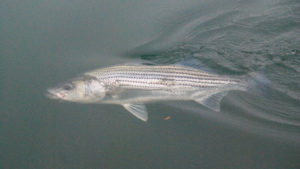
Water-release factors
Most of Venable’s outings involve one-way floats on which a group of anglers put in below a dam, float and paddle a few miles downstream, taking out without having to go upstream. Timing these floats with water releases from the upstream dam has its advantages for fishing, but is a little more difficult to navigate.
“With experienced paddlers, it’s not as big an issue because the releases are don’t necessarily becomes a safety issue,” he said. “We usually do try to time it somewhat, coinciding with water releases,as long as they’re following the schedule, which, of course, the power companies don’t always do.”
Fishing during a water release isn’t mandatory; Venable said the fish don’t leave the area. In fact, striped bass that commit to an upstream lifestyle aren’t likely to leave, because crossing an open lake full of hot water is not an option.
“We can catch fish anytime,” he said. “The advantage of running water is the fish move up directly below the dam. If they’re not running water, we can hunt them down in the deeper pockets below the dam, because the fish will back off the dam into deeper holes. We can find them there, even when they’re not generating water.”
 Hungry river stripers
Hungry river stripers
Another big advantage to fishing in the river is that striped bass tend to be less finicky in their eating habits. If an opportunity presents itself, they’ll typically bite, whereas lake stripers have more downtime when conserving energy is more important than feeding.
“The good thing about the stripers in the rivers is they don’t necessarily have a defined feeding schedule like you experience in a lot of the lakes,” he said “The moving water stays relatively cool all day. The fish will be more active throughout the day than they would be in the lake.”
According to Venable, the size fish you’d expect to find in both the Catawba and Yadkin river tailraces are comparable to what you’d find in the lakes: 4 to 10 pounds.
Unlike fishing from a stationary boat, kayak anglers will learn to fish on the fly. Occasions also arise where the angler can get out of the boat and fish from a rock or shoal before continuing downstream.
“I rarely anchor. I go with the current, and then I’ll paddle back up and drift down again,” Howard said. “If it’s faster than that, where you can’t fish by drifting, it’s too fast to anchor because it’ll flip you in the current. When fishing artificial baits in fast current, which is usually what I do, I’ll find a rock somewhere where I can park the boat, make my casts, then continue on.”

